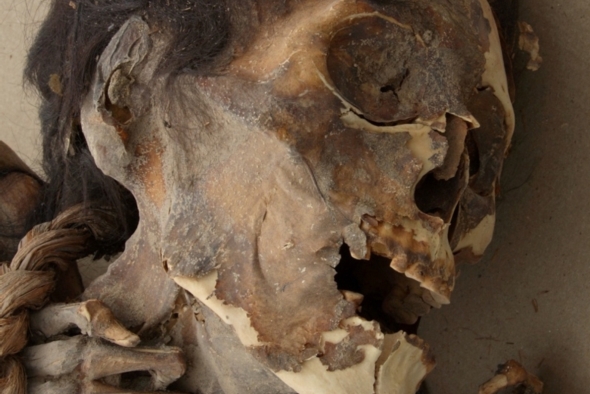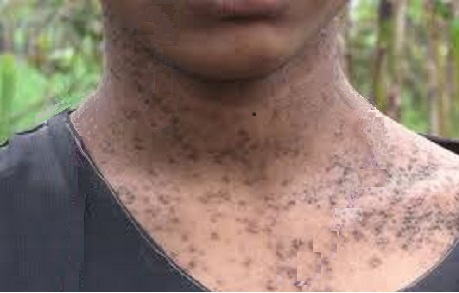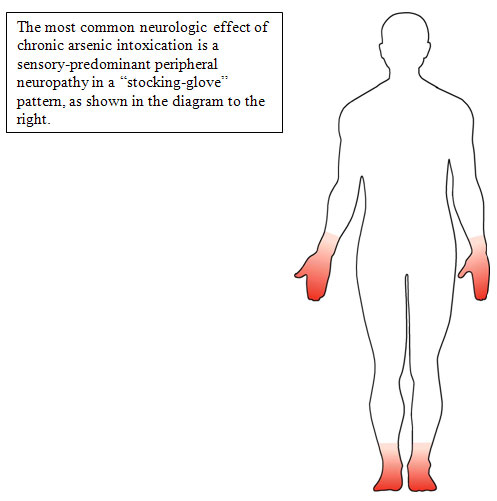The 1858 Bradford sweets poisoning was the arsenic poisoning of more than 200 people in Bradford, England, when sweets accidentally made with arsenic were sold from a market stall. Twenty-one victims died as a result.
Water around Giant Mine in N.W.T. may never recover from arsenic contamination by Bob Webber The Canadian Press, August 18, 2016, Winnipeg Free Press
YELLOWKNIFE – A study of lakes near one of Canada’s most contaminated industrial sites suggests the water immediately around Yellowknife’s Giant Mine won’t return to its natural state for generations — if ever.
“This is going to be a contaminated site indefinitely,” said Jules Blais, a University of Ottawa professor and lead author on a paper just published by the Proceedings of the Royal Societyin the United Kingdom.
“Even when we’ve looked at other parts of Canada that have been heavily affected by mines, including Sudbury, we’ve never seen these kinds of impacts.”
Blais and his colleagues used sediment cores to examine the impact of the gold mine’s heavy arsenic contamination on the tiny bugs and plants that live in Pocket Lake, one of the small lakes that ring the Giant property.
The Giant Mine operated from 1948 to 2004 and produced about seven million ounces of gold. It also left behind an environmental nightmare that includes underground caverns filled with 237,000 tonnes of arsenic and a 95-hectare surface site poisoned with 13.5 million tonnes of arsenic-contaminated tailings.
Blais estimates another 20,000 tonnes of arsenic blew out of smokestacks and ended up in land and water in the mine’s early days.
Pocket Lake sediments from the 1960s contain up to three per cent arsenic. That means a handful of dried mud weighing about a kilogram could contain up to 30 grams of the metalloid.
A lethal dose would be between 80 and 240 milligrams for a Canadian man of average weight.
“We don’t ever see values like that,” Blais said. “These are some of the highest arsenic concentrations I’ve ever seen in a natural setting.”
Even though the mine has been dormant for 12 years, fresh sediments in the lake remain tainted with arsenic at levels that far exceed safety thresholds. Its water, too, is contaminated.
The cores revealed that entire classes of tiny plants and animals — planktons and water fleas — were wiped out during the peak years of contamination.
“We’ve never seen these kinds of impacts,” said Blais. [Until frac impacts are honestly reported?]
Those parts of the ecosystem have never come back.
“Usually, after a number of decades after the peak of contamination, normally we start seeing these populations returning. Here, we don’t see a recovery.”
The findings underscore the mammoth and unique scale of Giant’s environmental liability, said Blais. [With Canada’s lack of court, politician or regulator action, only ordinary Canadians and their children, and their children and their children and their children, etc, will pay and pay and pay and pay for the company’s massive liability]
“We have looked at population impacts in other parts of the world,” he said. “We’ve never seen this kind of thing.”
The last company to own the mine as well as its environmental liability, Royal Oak Mines, no longer exists. The mine was established before laws requiring environmental performance bonds were passed. [What good do those bonds do? Notably with Harper decimating environmental laws in Canada?]
The federal government is in the middle of a billion-dollar, taxpayer-funded program to remediate the site. But even that cleanup, focused on the many remaining structures and vast subterranean arsenic-stuffed caves, isn’t likely to restore the ecosystem in the immediate area to what it was, Blais said.
“Those 20,000 tonnes of arsenic trioxide that was released to the environment are going to continue to contaminate the local environment.
“That’s a genie out of the bottle. It’s out and it will continue to cause problems.”
Yellowknife gets its water from the Yellowknife River, which flows near the mine. But the river’s watershed is big enough to keep arsenic levels low. The city also tests for arsenic. [How many Canadians in N.W.T. chronically sip arsenic with their tea?]
Note to readers: This is a corrected story. An earlier version said the paper was published by the Royal Society of Canada. [Emphasis added]
Health officials downplay high arsenic concentrations in Yellowknife-area lakes, Highest contamination in lakes southwest of Giant Mine, near Fred Henne park by Richard Gleeson, April 30, 2016, CBC News
Dr. Andre Corriveau, N.W.T.’s Chief Public Health Officer, says arsenic concentrations in water ‘slightly above drinking water guidelines for swimming, even for wading and the odd gulp of water, would be entirely safe.’
Arsenic woes are common for Yellowknife-area residents, a byproduct of the now-closed Giant Mine: last year, levels found in the city’s lakes were four times the recommended limit for drinking water. …
1. All mushrooms around Yellowknife can be dangerous
First, the bad news: make no mistake, any mushrooms in the Yellowknife area — not just morels — run a major risk of containing high levels of arsenic.
Joachim Obst, a naturalist who has been studying mushrooms in the Northwest Territories for over 30 years and has been leading the territorial government’s information sessions for morel pickers, says that “scientists have known since the 1960s that you can’t eat those mushrooms.”
“The science has been known for 50 years that mushrooms near mine sites contain heavy metals and contaminants,” says Obst, who wrote a study last year stating that an adult could exceed the daily Canadian health standard for toxic organic arsenic by consuming as little as 1.4 grams of contaminated mushrooms found near the city.
“People have been harvesting for 30 years, mushrooms growing right outside the entrance to Giant Mine,” says Obst. “I was alarmed 18 years ago when I watched people picking those mushrooms, and I’ve been telling people: ‘please don’t.'”
Research identifying high arsenic levels in lakes in and around Yellowknife has prompted a health advisory cautioning people to limit their exposure to the lakes.
But in issuing the advisory, health officials emphasized that the only health standard for arsenic concentrations — the one set for drinking water — is largely irrelevant when considering the health effects of swimming in water with higher arsenic concentrations.
“The set level at 10 parts per billion is very strict,” said N.W.T.’s Chief Public Health officer Andre Corriveau.
“It includes a margin of safety. It assumes you’re drinking the water daily for 30 years in terms of your risk for cancer. To be slightly above drinking water guidelines for swimming, even for wading and the odd gulp of water, would be entirely safe.”
The higher concentrations in the lakes are the result of historic emissions from the Giant Mine roaster stack.
The mine operated for 56 years, finally shutting down in 2004. During its run, the stack atop its gold roaster emitted hundreds of thousands of tons of arsenic dust which settled on the land and water around it. Over the years, levels in lakes have increased as arsenic dust has washed into lakes with each spring melt.
Prevailing winds carried the dust mainly south-southwest of the roaster stack, which is reflected by higher levels in lakes in that area. The highest concentrations — up to 60 times the arsenic limit set for drinking water — are in small lakes with little drainage southwest of the mine.
Some of them flank a new bypass road linking the city to recreational areas on the Ingraham Trail. Those lakes are also adjacent to the Prospector Trail, a hiking trail that begins in Fred Henne Territorial Park, the busiest park in the Northwest Territories.
An official said signs will be posted along the trail this summer cautioning people about high arsenic concentrations in the water.
Similar signs will be posted on some lakes within the city, such as Frame Lake, the official said.
Health officials recommend not drinking untreated water from any lake.
The advisory says lakes with arsenic concentrations less than 52 parts per billion are considered safe for swimming and fishing. Lakes with concentrations between 10 and 52 parts per billion are above Health Canada’s drinking water guidelines but the advisory says occasional exposure does not pose a significant risk for arsenic-related health effects.
The advisory says water should not be consumed from lakes with concentrations at 52 parts per billion and above. It also recommends avoiding fishing and harvesting berries, mushrooms and other edible plants in the area.
Arsenic concentrations in lakes in and around Yellowknife (ppb)
Frame Lake 343
Long Lake 39.7
Jackfish Lake 88.3
Grace Lake 9.8
Mason Lake 2.7
Hay Lake 6.5
Pontoon Lake 6.5
Vee Lake 24.7
Walsh Lake 8.9
Bighill Lake 1
Martin Lake 20.4
Lower Martin Lake 40.6
Handle Lake 140
Landing Lake 10.5
Ryan Lake 20
Duckfish Lake 2.2
Source: Department of Environment and Natural Resources
[Refer also to:

The team detected arsenic in the mummy’s hair and in the soil. They also discovered skin conditions indicative of arsenic poisoning. Photo Ioanna Kakoulli, UCLA
Arsenic toxicity, or poisoning, causes the energy system of the cell to become disrupted, and since arsenic is widely distributed throughout the body, very few organ systems escape the toxic effects of arsenic. …
If there is a sudden exposure to arsenic, then choleralike gastrointestinal symptoms of vomiting (often times bloody) and severe diarrhea (which may be rice-watery in character and often bloody).
If the arsenic exposure is chronic and more insidious, then symptoms may manifest as a classical dermatitis called “dew drops on a dusty road.”

… Also with chronic arsenic exposure a peripheral neuropathy is common that is usually a painful “pins and needles” paresthesia affecting the feet and hands in a symmetrical stocking-glove distribution.


